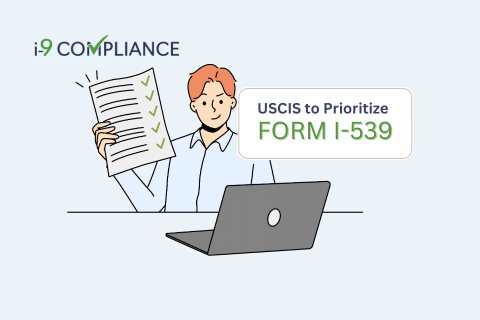USCIS to Prioritize Pending Form I-539 When Employers File Form I-129 with Premium Processing Service

April 13, 2023
The U.S. Citizenship and Immigration Services (USCIS) has provided updated guidance to its informational page, “Options for Nonimmigrant Workers Following Termination of Employment.” In its new guidance, the agency would prioritize pending Form I-539 applications to change an individual’s status to B-1/B-2 visitor status. In addition, this priority would apply to cases where an employer has subsequently filed a Form I-129 petition with premium processing service on the individual’s behalf.
This update would prove beneficial for laid-off nonimmigrant workers and their potential employers. For example, it would ensure continuity of employment and avoid severe inconvenience for the involved parties. Laid-off H-1B workers have only 60 days to find new work. Otherwise, they would have to leave the country for more time to find a new job. In many cases, foreign nationals consider changing their status to B-1 or B-2 visitor status by filing Form I-539.
Unfortunately, the B-1 and B-2 visitor status explicitly prohibits employment activities. However, it could provide additional time to gain new employment. It also provides opportunities for an H-1B extension under the flexibility provisions of the American Competitiveness in the Twenty-First Century Act.
Foreign national workers who gain new employment or eligibility for an extension need their employer to file a Form I-129 petition. Filing this form would change their visitor status back to H-1B. In most cases, employers would likely choose premium processing because the average processing times fall between four to ten months. Due to this average, many file this petition before the adjudication of the former.
Previously, this process would cause delays in the adjudication of Form I-129. In some cases, USCIS would even issue a Request for Evidence, requiring the foreign national to present proof of status while the Form I-129 is pending. If a foreign national worker could not wait for approval of both forms, they had to leave the U.S. to gain H-1B status again.
According to USCIS’s recent guidance, a pending Form I-539 may qualify for the premium processing with Form I-129 petitions. As such, foreign nationals could receive nonimmigrant statuses on their Form I-129s regardless of whether the petitions received concurrent approval.
As these changes demonstrate, the regulatory environment for the employment of foreign national workers is continuously changing. Nowhere is this more true than in the employment eligibility verification process (Form I-9). One of the best ways to ensure continued compliance is to utilize an electronic I-9 management system. This tool will provide continuous guidance for completing the employment eligibility verification process and a suite of powerful features for ensuring compliance.
Automate your employment eligibility verification today with the ensured compliance of I-9 Compliance.